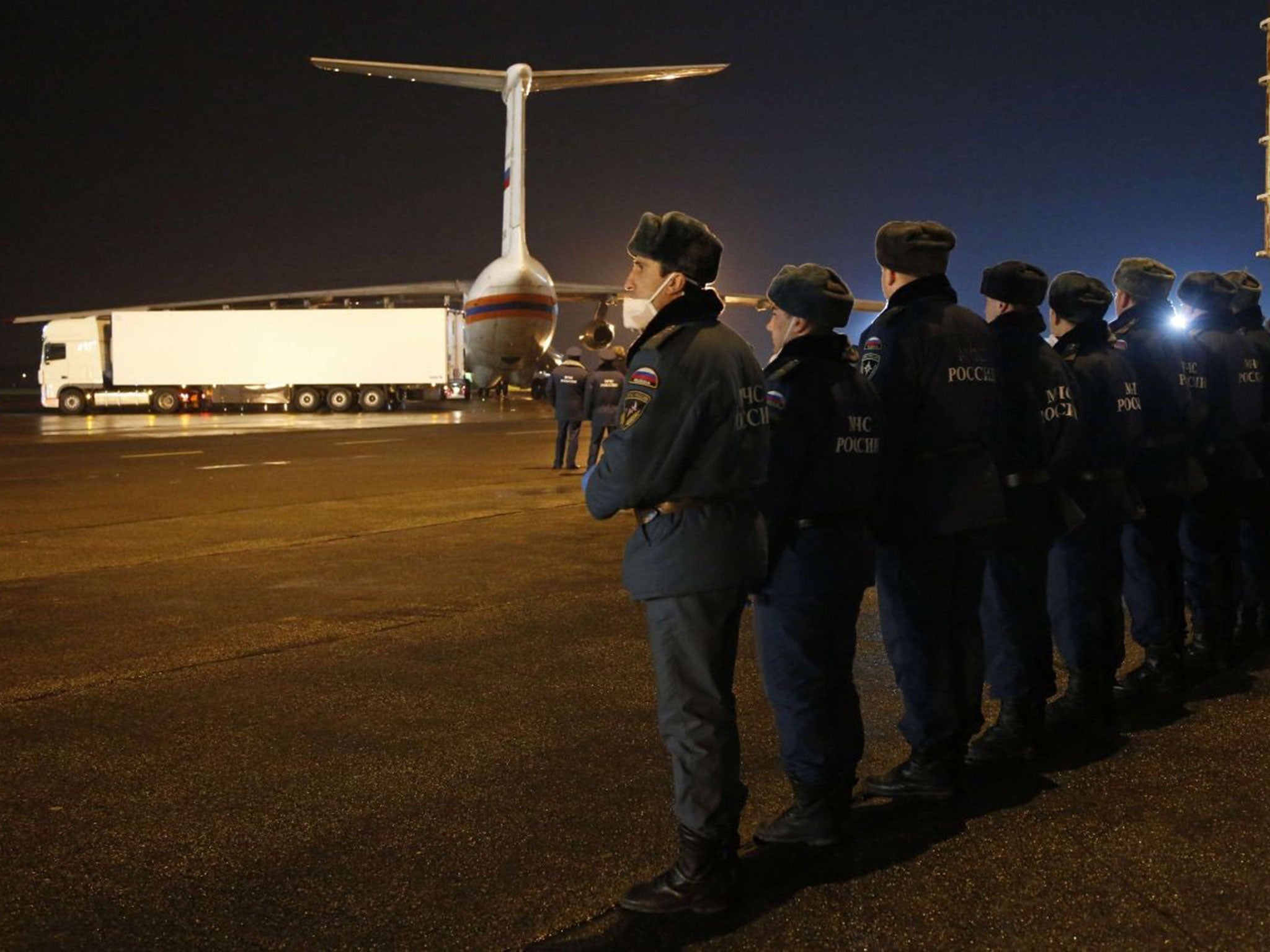Egypt plane crash: First video emerges showing charred wreckage of Metrojet flight 9268 in Sinai desert
Bodies of the 224 victims are being flown home to Russia and Ukraine while investigations continue
Your support helps us to tell the story
From reproductive rights to climate change to Big Tech, The Independent is on the ground when the story is developing. Whether it's investigating the financials of Elon Musk's pro-Trump PAC or producing our latest documentary, 'The A Word', which shines a light on the American women fighting for reproductive rights, we know how important it is to parse out the facts from the messaging.
At such a critical moment in US history, we need reporters on the ground. Your donation allows us to keep sending journalists to speak to both sides of the story.
The Independent is trusted by Americans across the entire political spectrum. And unlike many other quality news outlets, we choose not to lock Americans out of our reporting and analysis with paywalls. We believe quality journalism should be available to everyone, paid for by those who can afford it.
Your support makes all the difference.The first footage has emerged showing the wreckage of Metrojet flight 9268, with charred parts of the aircraft seen surrounded by passengers’ luggage and belongings in the Sinai desert.
Operations to recover the bodies of the 224 people on board are expected to finish today as investigations continue into what caused the plane to break up mid-air and plummet to the ground.
The first bodies arrived in St Petersburg this morning on a Russian government plane, being taken to the airport they would have landed at while returning from holidays in Egypt’s Red Sea resorts.
Identification work is starting today before more victims arrive tonight.

Grieving relatives and well-wishers have been visiting Pulkovo Airport, piling up floral tributes while mourners in Moscow arranged candles to spell out flight number 7K-9268.
Vladimir Putin declared Sunday a nationwide day of mourning and remembrance services are lasting through today in St Petersburg.
Russia has sent over 100 emergency workers and aviation experts to help Egypt examine the crash site, where French, German and Airbus teams are also helping the investigation.
Officials said wreckage was spread over 12 square miles, with the Airbus A321 appearing to have split into two, with one section hitting the rocky ground and another burning as it fell.
Wilayat Sinai, an Egyptian jihadist group allied to Isis, claimed responsibility for the crash, saying it downed the jet “in response to Russian airstrikes that killed hundreds of Muslims on Syrian land”.
But investigators said initial inspections showed no evidence of a missile strike or explosion and that it was too early to draw conclusions from the plane’s break-up.
It was just 25 minutes into its scheduled flight from Sharm el-Sheikh to St Petersburg on Saturday morning when it disappeared from radar over the Sinai peninsula.
Egyptian officials said the pilot radioed to report technical difficulties and planned an emergency landing at the nearest airport before losing contact with air traffic controllers.
According to FlightRadar24, a Sweden-based flight tracking service, the aircraft slowed and then descended rapidly from 31,000ft at about 6,000ft per minute before it disappeared.
Relatives of the pilot have claimed that he and crew had raised concerns about the safety of the 18-year-old Airbus, although airline owners Kogalymavia claimed it had undergone checks and was in “full working order”.
Records show it had been damaged by a tail-strike accident while landing in Cairo in 2001.
The Japan Airlines Flight 123 disaster in 1985 was caused by incorrect repairs after a tail-strike seven years before.
An explosive decompression 12 minutes into its flight led to a crash killing 520 passengers and crew in the deadliest single aircraft accident in history.
Additional reporting by agencies
